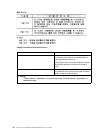4 Intel Server Compute Blade SBX82 Installation and User’s Guide
Features and specifications
This section provides a summary of the features and specifications of your blade server. Use the
Configuration/Setup Utility program to determine the specific type of processor that is in the blade
server.
Reliability, availability, and serviceability features
Three of the most important features in server design are reliability, availability, and serviceability
(RAS). These RAS features help to ensure the integrity of the data stored on the blade server; that
the blade server is available when you want to use it; and that should a failure occur, you can easily
diagnose and repair the failure with minimal inconvenience.
The blade server has the following RAS features:
• Advanced Configuration and Power Interface (ACPI)
• Automatic error retry or recovery
• Automatic server restart
• Built-in monitoring for temperature, voltage, hard disk drives, and flash drives
• Chipkill* memory for DIMMs with a capacity of 512 MB or greater
• Customer upgradeable basic input/output system (BIOS) code
• Diagnostic support of Ethernet controllers
• Error codes and messages
• ECC protection on the L2 cache
• ECC memory
• Failover Ethernet support
• Hot-swap drives on optional small computer system interface (SCSI) storage expansion unit
• Light Path Diagnostics* feature
• Power-on self-test (POST)
• Predictive Failure Analysis* (PFA) alerts
• Processor serial number access
• Service processor that communicates with the management module to enable remote blade
server management
• SDRAM with serial presence detect (SPD) and vital product data (VPD)
• System error logging
• VPD (includes information stored in nonvolatile memory for easier remote viewing)
• Wake on LAN* capability


















